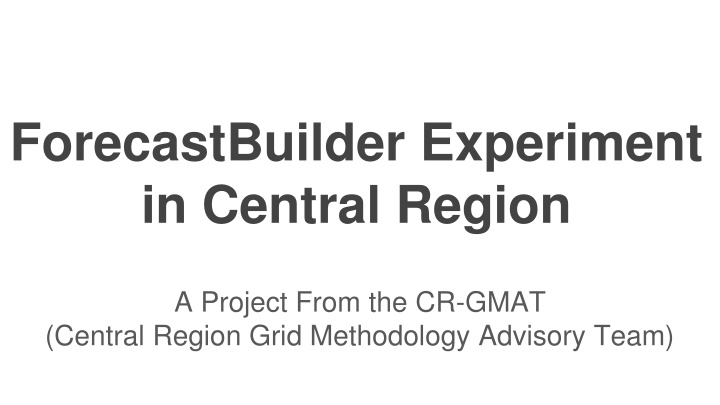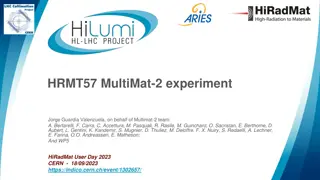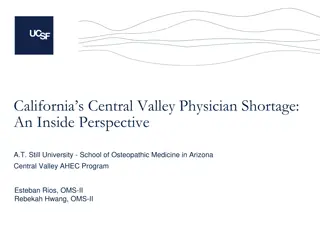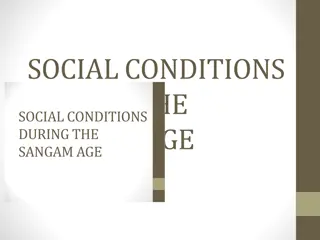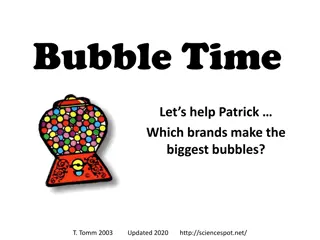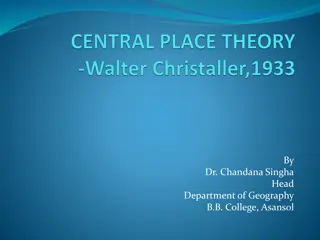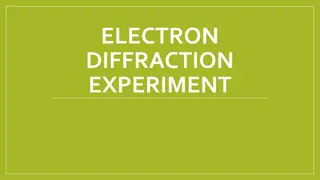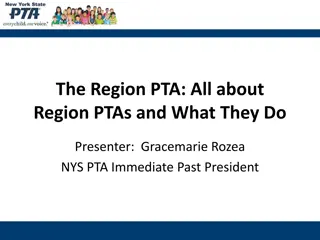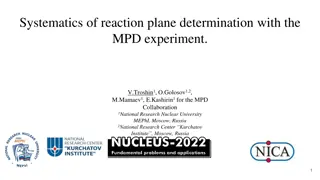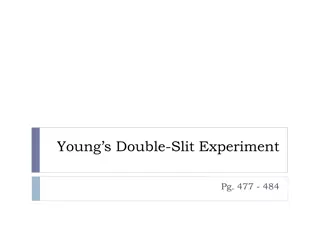ForecastBuilder Experiment in Central Region
The CR-GMAT (Central Region Grid Methodology Advisory Team) works to standardize and improve forecasting grids in the Central Region. Learn about their goals, values, and the development of ForecastBuilder for producing consistent and quality forecast grids.
Download Presentation

Please find below an Image/Link to download the presentation.
The content on the website is provided AS IS for your information and personal use only. It may not be sold, licensed, or shared on other websites without obtaining consent from the author.If you encounter any issues during the download, it is possible that the publisher has removed the file from their server.
You are allowed to download the files provided on this website for personal or commercial use, subject to the condition that they are used lawfully. All files are the property of their respective owners.
The content on the website is provided AS IS for your information and personal use only. It may not be sold, licensed, or shared on other websites without obtaining consent from the author.
E N D
Presentation Transcript
ForecastBuilder Experiment in Central Region A Project From the CR-GMAT (Central Region Grid Methodology Advisory Team)
GMAT (Grid Methodology Advisory Team) Formed in 8/2008 with an 80% to 20% mix of NWSEO forecasters and management team members (SOO/ITO) Answers to CR Headquarters through the SSD (Science Services Division) Goals/Charter Promote the development of science-based techniques and tools for GFE Review and recommend policy for creating gridded forecast for Central Region Team values: Trust Continuous communication with the field Surveys Webinars Feedback forms VLAB (lately) Rapid responses to issues Strong working relationships with CR SSD and CR NWSEO
The development of ForecastBuilder Since the GMAT inception the team looked to standardize and improve the creation of the SnowAmt, IceAccum, and Wx grids. Surveys revealed that there were many disparate ways that offices were creating these grids - some with questionable science leading to consistency issues both internally and externally. Late in 2015, based on our previous projects, the team felt that the time was right to fully take on these elements. It quickly became clear that the SnowAmt, IceAccum, and Wx grids have major dependencies and connections with many other forecast elements. Accordingly, producing consistent, quality forecast grids required a comprehensive, science based, approach.
The GMAT saw a need to work together both regionally and nationally to produce a gridded forecasting approach that: Is structured, systematic, and scientifically grounded Replicable from Office to Office and Forecaster to Forecaster Creates SnowAmt, IceAccum, and Wx grids in the same way Fills the regional policy gap between the ESTF periods
Result Accordingly, the CRGMAT, with support from CR SSD and CR NWSEO, developed a standard procedure for producing the Wx, Snow and Ice grids. CRGMAT created the ForecastBuilder program, including its supporting components, to meet our team s goals for forecast grid creation in the region. The GMAT strives to bolster the ForecastBuilder s effectiveness, use, and adoption throughout the region and now beyond.
CRGMATs Answer - ForecastBuilder Procedure A new GFE procedure which employs a streamlined and systematic methodology for developing the forecast Provides a strong initialization scheme based on well verifying blended models. This also results in a consistent, common starting point Also incorporates observations CRON based version provided for the initialization Employs sound science to derive SnowAmt, IceAccum, and Wx grids - ensuring internal consistency Greatly facilitates creating the Wx grid Fast process
Developed and tested by the field forecasters - those on the front lines Robust and flexible procedure with the support of regional developers responsive to the field Ideally this approach would become the national delivery mechanism for the NBM - maintaining the WFO forecaster as the driver of the official NWS forecast and its message
ForecastBuilder was developed in collaboration with: Upper Mississippi Valley SOO community National SmartInit Team NBM Wx Grid Team CR Consistency Team CR NWSEO CRH Management
Immediate Benefits For Forecasters Allows forecasters to spend more time on: IDSS - especially in high impact situations Situational Awareness / Meteorological Analysis The forecast problem(s) of the day Training / Professional Development Improved grid consistency by starting from a consistent and seamless database Forecaster remains in control of grids (i.e. over the loop) and the message
Immediate Benefits For Forecasters (continued) Future training is focused and streamlined Automatically ensures the meteorological forecast integrity of the database An approach which allows forecasters to share experiences, science and techniques to all offices This process will allow for improvements to be instantly spread to all offices For grids - much easier to back up another office, or when settling into another office
The ForecastBuilder Methodology is designed to evolve and improve with new techniques and scientific findings. The developers will be responsive to all feedback and suggestions. This will be maintained by the CRGMAT and become a means of science sharing resulting in a standard GFE methodology that grows .
ForecastBuilder Methodology Foundation Grids Temps Td/RH Wind/WindGust Sky PoP QPF SnowRatio Non- Precipitation Types (F, FR, BS, T, Etc.) Wx Grid Precip Types, Accumulation Grids, Integrity Checks Completely Derived (No editing needed) Top Down Grids Completely Derived (no editing needed) MaxTwAloft ProbIcePresent ProbRefreezeSleet Items in Yellow Initialized and can be Edited RoadTemp
First Step - Choose A Time Period To Work On Other options Jump ahead (e.g. happy with the foundation grids) Can also update Aviation and/or FireWx Grids
Step 2 - Most Important - Update Foundation Grids Ability to initialize grids with best verifying data sets over the long term, and blend in the Obs Forecasters should spend 90- 95% of their total grid editing and collaboration time with these key grids Seek targets of opportunity for modification, in a collaborative manner
Step 3 - Update Top Down Grids Only inspect for: Freezing Rain Sleet Rain with a deep cold isothermal layer (e.g. 1C up to 2000 ft). This step will be skipped if coldest hourly temp in the forecast time range is > 40F Models incorporated (those that have good vertical resolution in
Step 4 - Precip Types, Snow/Ice and Integrity Checks Background science and statistics will generate probabilities of precipitation types and the SnowAmt/ IceAccum grids If you don t like the output, collaboratively change either Foundation or Top-Down grids. Remember this is the One NWS forecast Integrity checks along with updates to ApparentT, Td/RH
Step 5 - Non-Precipitation Types Tools provided to help you produce non- precipitation types Science-based study results incorporated - such as for BlowingSnow One area where field- driven improvements are anticipated through more science, technology and empirical infusion
Step 6 - Update Wx Grids 95% or more of the time these defaults are fine Automatically brings in convective watches to enhance the Wx grids Wx intensities are derived from QPF/SnowAmt Adds a level of flexibility/control before the Wx grid is created
Training and Support Provided ForecastBuilder employs the most current peer-reviewed scientific techniques via: SnowRatio The FRAM Ice Accumulation Model (produced by Kris Sanders and Brian Barjenbruch @ TOP) The Top-Down approach for forecasting precipitation type Operational deployment videos on: ForecastBuilder usage Ways to improve upon a consensus initialization Winter weather training via: Job sheets
ForecastBuilder Process Period 2 - day 7 initialized at 0530Z and 1730Z with SuperBlend by ForecastBuilder_CRON for the foundation grids T, MaxT, MinT, Td, Wind, Sky, PoP. Additionally: WindGust, QPF, SnowRatio, MaxTAloft, ProbRefreezeSleet, SnowAmt and IceAccum through day 3. Collaborate and modify, as needed, all foundation grids Use ForecastBuilder to produce SnowAmt and IceAccum, which incorporates the FRAM model for IceAccum Testbed offices (a cluster of 10 WFOs) adjusted the Top Down grids and created the Wx grids via ForecastBuilder Other WFOs joined in during the experiment
Testbed Offices - CR ForecastBuilder Usage Late 2016 Spring 2017
Was the Forecast Created in a Shorter Amount of Time Using ForecastBuilder?
ForecastBuilders Future CR to use NationalBlend as starting point in ForecastBuilder Q4 FY17 - Q1 FY18 Gradually roll back support of Regional Blends. FY18 Start with NBMRegBlend, CONSMOS, BCCONSMOS Possibly incorporate WR Impact Grids idea ESTF (Enhanced Short Term Forecast) with ForecastBuilder FY18 Possible 6 hour Grid Population to align with TAF times. Finalize grid updater built into FB to smoothly and effortlessly update dependent grids across the Public/Fire Wx/Aviation/Marine realms Q1 FY17 - Q1 FY18
Where we are heading (cont) Target of Opportunity Finder Q3 - Q4 FY 17 Fire Wx Grid Creation within ForecastBuilder Q3 FY17 - Q1 FY18 Ensure AutoWSW is running CR-wide Q1 FY18 Encourage further expansion of ForecastBuilder beyond CR Q2 FY17 - FY18
